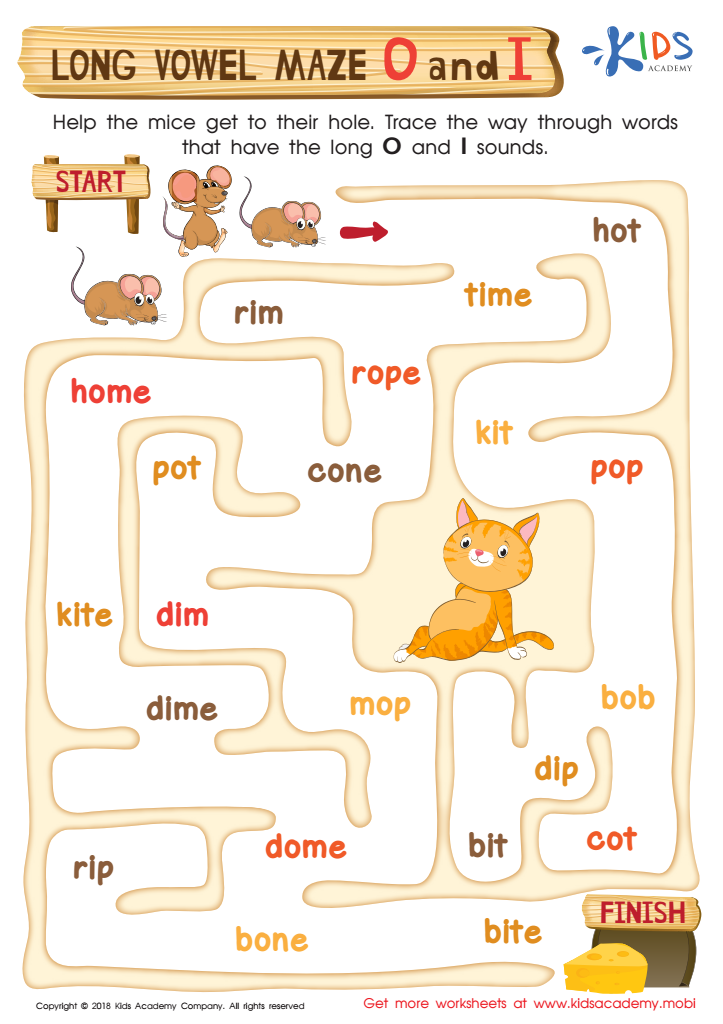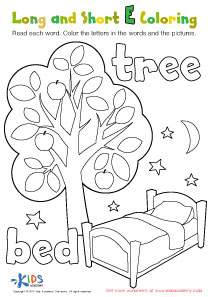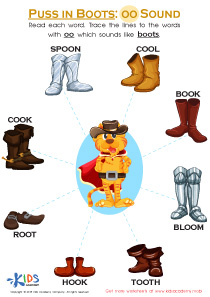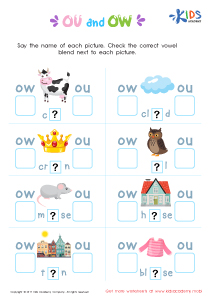Hand-eye Coordination Long Vowels Worksheets for Ages 4-6
3 filtered results
-
From - To
Discover engaging "Hand-eye Coordination Long Vowels Worksheets for Ages 4-6" designed to blend literacy and motor skills development. These fun, educational worksheets help young learners distinguish long vowel sounds while enhancing their hand-eye coordination through tracing and matching activities. Perfectly suited for preschool and early elementary students, they offer a delightful mix of learning and play. Boost your child's reading readiness and fine motor skills with colorful exercises that make language learning enjoyable and effective. Give your little one a head start in phonics and coordination with these expertly crafted, age-appropriate worksheets.


Long Vowel Maze /o/ and /i/ Worksheet


Long and Short U Worksheet


Long and Short E Worksheet
Hand-eye coordination and understanding long vowels are fundamental skills in early childhood development, especially for children ages 4-6. Firstly, hand-eye coordination—the ability to synchronize visual perception with hand movements—is crucial because it affects a child’s proficiency in everyday tasks such as writing, coloring, cutting with scissors, and playing sports. These activities not only improve fine motor skills but also boost confidence and independence.
Simultaneously, mastering long vowels is a key aspect of early literacy. Long vowels refer to vowel sounds that are pronounced the same as the letter name, essential for learning to read and spell. Recognizing these sounds helps children decode words more effectively, facilitate smoother reading experiences, and aid in the comprehension of a broader vocabulary.
When parents and teachers prioritize both hand-eye coordination and long vowel recognition, they provide a balanced approach to learning. Intervening at this developmental stage lays a strong foundational block for academic success, fluency in reading and writing, and physical dexterity, enabling an overall well-rounded growth in young children. Activities such as tracing letters (combining hand-eye coordination with phonics) and games that require visual and manual tasks promote these skills in an engaging and effective manner. Employing such targeted practices positions children for future accomplishments both in school and in life.
 Assign to My Students
Assign to My Students












